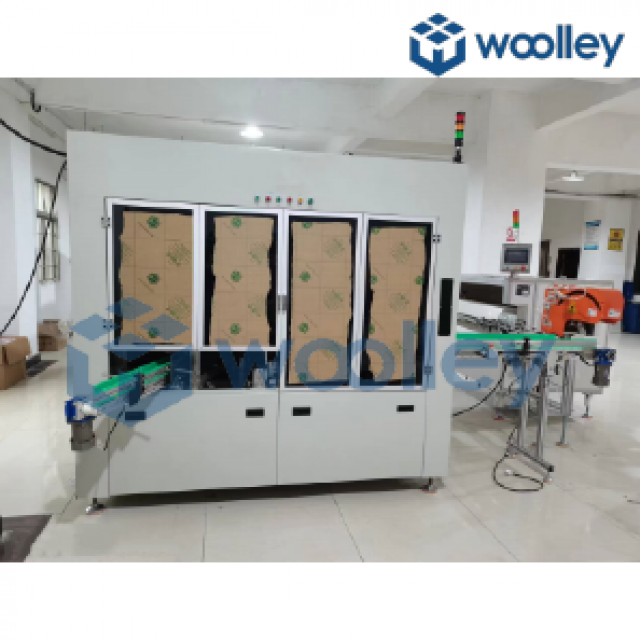Silk screen printing is a versatile and widely used technique in the printing industry, known for its ability to produce vibrant and durable prints on a variety of substrates. However, like any machinery, silk screen printing machines can encounter issues that may disrupt production. At Woolley Automatic Machinery Ltd, a leading manufacturer of Quicker Tube Machines, we understand the importance of maintaining optimal performance in your printing operations. In this article, we will explore common issues that arise with silk screen printing machines and provide detailed troubleshooting solutions to help you maintain seamless operations.
Before diving into troubleshooting, it's essential to have a basic understanding of how silk screen printing machines function. These machines work by transferring ink through a mesh screen onto the substrate. The screen is prepared with a stencil, which blocks certain areas to create the desired image. The process involves several components, including the frame, mesh, squeegee, and ink system, all of which must function harmoniously to produce high-quality prints.
Ink bleeding occurs when the ink spreads beyond the intended area, leading to blurry or smudged prints. This issue can be caused by several factors, including incorrect mesh tension, excessive ink, or improper squeegee pressure.

Solution: Ensure the mesh is properly tensioned. Check the squeegee pressure and adjust it to the recommended settings. Use the appropriate amount of ink for the print job.
Clogging of the mesh screen can result in incomplete prints or inconsistent ink application. This often happens due to dried ink or debris blocking the mesh openings.
Solution: Regularly clean the mesh screen using appropriate cleaning solutions. Ensure that the ink used is suitable for the mesh type and conditions. Implement a routine maintenance schedule to prevent buildup.
Poor registration refers to the misalignment of different colors or layers in a print, leading to a distorted or unprofessional appearance.
Solution: Calibrate the machine to ensure precise alignment of the screen and substrate. Use registration marks and adjust the frame or table as needed. Regularly check and maintain the mechanical components responsible for alignment.
Inconsistent print quality can manifest as variations in color density, image sharpness, or overall print clarity. This issue may arise from uneven squeegee pressure, variable ink viscosity, or inconsistent substrate surface.
Solution: Standardize the printing environment, including temperature and humidity. Ensure the squeegee is in good condition and apply consistent pressure. Regularly monitor and adjust ink viscosity as needed.
Machine jamming can halt production and damage components. This problem often occurs due to improper loading of substrates or mechanical failures.
Solution: Carefully load substrates to avoid misalignment. Conduct regular inspections of the machine's moving parts and lubricate them as necessary. Replace worn-out components promptly to prevent jamming.

Preventive maintenance is crucial for ensuring the longevity and optimal performance of your silk screen printing machine. At Woolley Automatic Machinery Ltd, we recommend implementing the following practices:
Regular Cleaning: Clean all machine components, including screens, squeegees, and ink trays, after each use to prevent ink buildup and contamination.
Routine Inspections: Conduct thorough inspections of the machine's mechanical and electrical components to identify potential issues before they escalate.
Lubrication: Regularly lubricate moving parts to reduce friction and wear, ensuring smooth operation.
Calibration: Periodically calibrate the machine to maintain accurate registration and print quality.
Training: Provide ongoing training for operators to ensure they are familiar with the machine's functions and troubleshooting procedures.
Silk screen printing machines are invaluable tools in the printing industry, offering versatility and high-quality results. However, like any machinery, they require regular maintenance and troubleshooting to function optimally. By understanding common issues and implementing effective solutions, you can minimize downtime and maintain the quality of your prints.
At Woolley Automatic Machinery Ltd, we are committed to providing our customers with reliable and efficient Quicker Tube Machines. Our expertise in the industry ensures that you receive the support and guidance needed to troubleshoot and resolve any issues with your silk screen printing equipment. With proper care and attention, your machine can deliver consistent and exceptional results, contributing to the success of your printing operations.
If you have any questions or require further assistance, please do not hesitate to contact our team at Woolley Automatic Machinery Ltd. We are here to help you achieve the best possible outcomes with your silk screen printing endeavors.
Remember, regular maintenance and prompt troubleshooting are key to extending the lifespan of your equipment and maximizing its performance. Stay proactive and keep your production line running smoothly with our expert tips and solutions.
Thank you for choosing Woolley Automatic Machinery Ltd as your trusted partner in the printing industry. We look forward to supporting your business with innovative solutions and exceptional service.
Contact: Mr. Woolley Tian
Phone: +8613671872020
Tel: +8613671872020
Email: woolley@woolleyauto.com(Вудли)
Add: No. 1379, Jiahao Road, Nanxiang Town, Jiading District, Shanghai City, China.